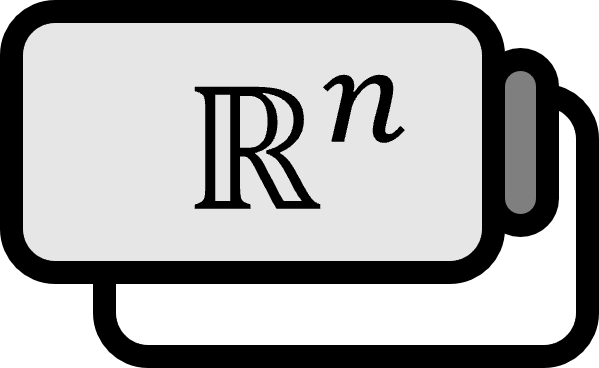Integration of Multivariable Functions
Definition1
Let $I^{k}$ be a k-cell, and assume $\mathbf{x} \in I^{k}$.
$$ \mathbf{x} = (x_{1},\dots,x_{k}),\quad a_{i} \le x_{i} \le b_{i} (i=1,\dots,k) $$
Suppose $f: I^{k} \to \mathbb{R}$ is continuous. Then, since it is integrable, let us set it as $f=f_{k}$, and define $f_{k-1} : I^{k-1} \to \mathbb{R}$ as follows:
$$ f_{k-1} (x_{1}, \dots, x_{k-1}) = \int_{a_{k}}^{b_{k}} f_{k}(x_{1}, \dots, x_{k}) dx_{k} $$
Then, by the Leibniz Rule, $f_{k-1}$ is continuous in $I^{k-1}$. Repeating this process $k$ times yields the constant $f_{0}\in \mathbb{R}$. This is called the integral of $f$ over $I^{k}$, and is denoted as follows:
$$ \begin{equation} \int_{I^{k}} f(\mathbf{x}) d\mathbf{x} \quad \text{or} \quad \int_{I^{k}}f \label{eq1} \end{equation} $$
Explanation
Such a definition of integration might seem to depend on the order of integration. However, in reality, the integral value of $f$ does not depend on the order of integration.
Theorem
Let $\eqref{eq1}$ be $L(f)$. Let another integral of some $f$ with a different order of integration be $L^{\prime}(f)$. Then, for all $f$ that are continuous in $I^{k}$, the following holds:
$$ L(f) = L^{\prime}(f) $$
Proof
Let us set the function $h$ as follows:
$$ h(\mathbf{x}) = h_{1}(x_{1}) h_{2}(x_{2}) \cdots h_{k}(x_{k}),\quad h_{j}\in \href{https://freshrimpsushi.github.io/posts/support-and-classes-of-continuous-functions/}{C([a_{j},b_{j}])} $$
Then, the following holds:
$$ L(h) = \prod \limits_{i=1}^{k} \int_{a_{i}}^{b_{i}}h_{i}(x_{i})dx_{i} = L^{\prime}(h) $$
Now, let $\mathscr{A}$ be the set of all finite sums of such $h$s.
$$ \mathscr{A} = \left\{ \text{all of finite sums of such functions h} \right\} $$
Since integration is linear, the following holds:
$$ L(g) = L^{\prime}(g),\quad \forall g\in \mathscr{A} $$
Furthermore, $\mathscr{A}$ becomes an algebra over $I^{k}$.
The set of functions $\mathscr{A}$ is called an algebra if it satisfies the following for all $f,g \in \mathscr{A}$ and the constant $c$:
- $f + g \in \mathscr{A}$
- $fg \in \mathscr{A}$
- $cf \in \mathscr{A}$
Now, by applying the Stone-Weierstrass Theorem, we obtain the following result:
- Let’s say $V= \prod \limits_{i=1}^{k}(b_{i} - a_{i})$. If $f \in C(I^{k})$ and $\varepsilon >0$ are given, then there exists $g\in \mathscr{A}$ that satisfies the following: $$ \| f - g \| < \dfrac{\varepsilon}{V} $$ In this case, the norm is given as $\| f \| = \max | f |$.
Then, the following inequality holds:
$$ \begin{align*} |L(f-g)| &\le L(\max|f-g|) = \| f-g \| V < \varepsilon \\ |L^{\prime}(f-g)| &\le L^{\prime}(\max|f-g|) = \| f-g \| V < \varepsilon \end{align*} $$
Also, the following equation holds:
$$ L(f) - L^{\prime}(f) = L(f) - L(g) + L^{\prime}(g) - L(f) = L(f-g) + L^{\prime}(g-f) $$
Therefore, we obtain the following equation:
$$ | L(f) - L^{\prime}(f) | = | L(f-g) + L^{\prime}(g-f) | < 2\varepsilon $$
Since this is true for all $\varepsilon$, we obtain the following:
$$ L(f) = L^{\prime}(f) $$
■
Walter Rudin, Principles of Mathematical Analysis (3rd Edition, 1976), p245-246 ↩︎
